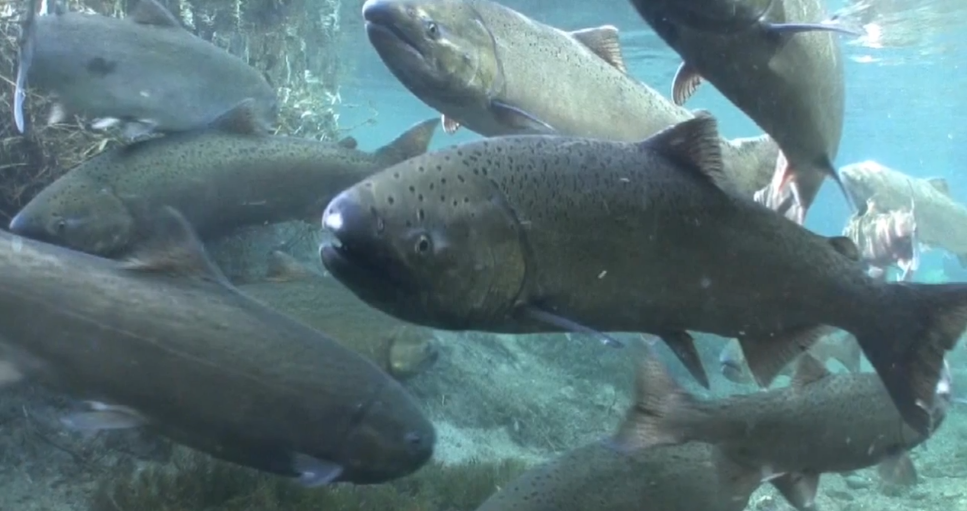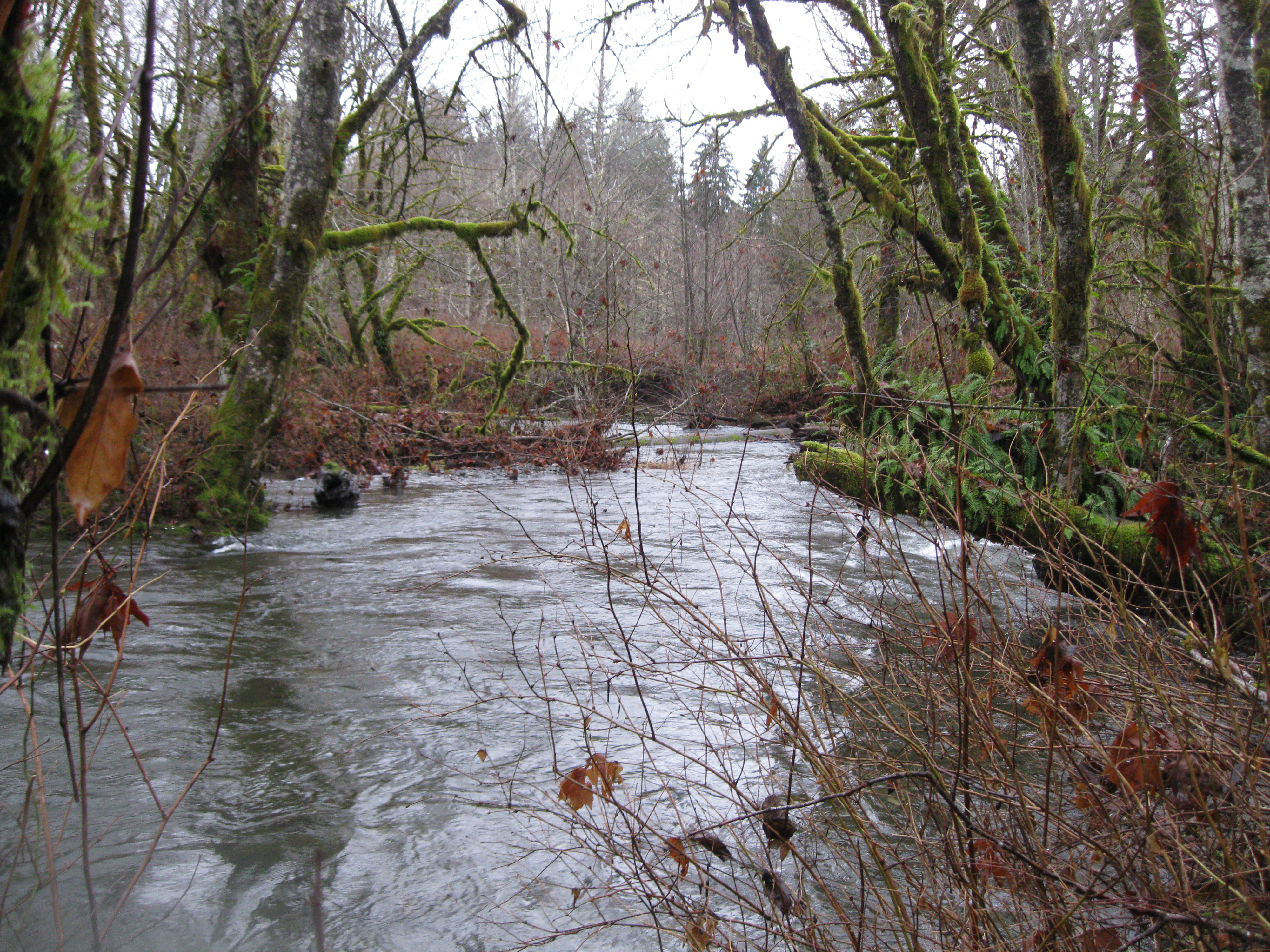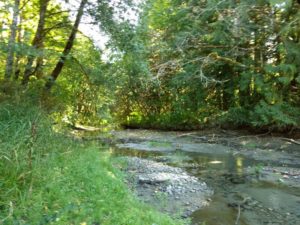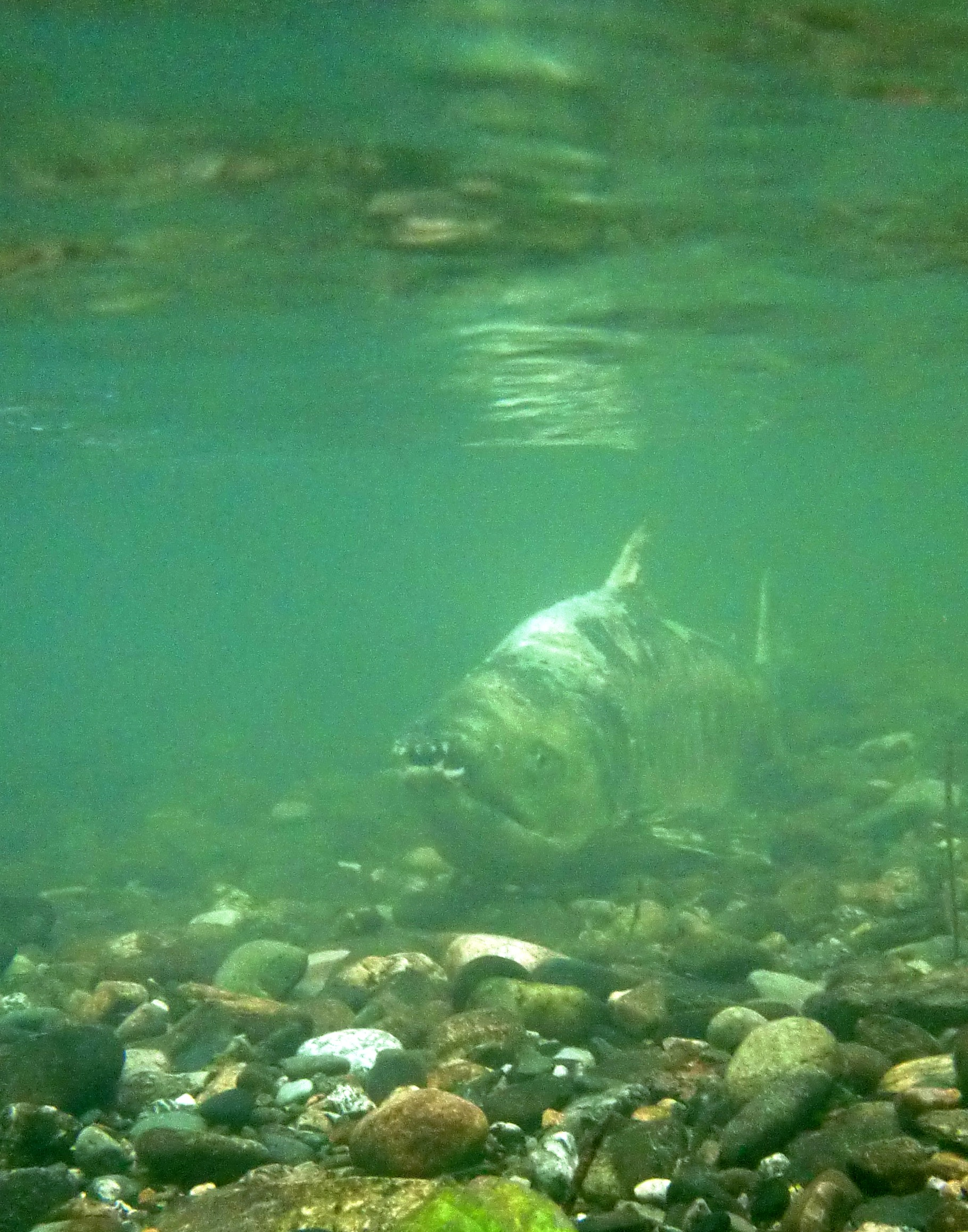
Salmon will have better habitat with help from a $332,000 penalty settlement with Cooke Aquaculture after the collapse of its floating pen near Cypress Island in 2017. The settlement required that the fine be split, part going to an environmental project for regional salmon enhancement or habitat restoration and the other part going to our Coastal Protection Fund.
"While this was a preventable incident, I’m pleased that the penalty will help improve and enhance salmon habitat, help Southern Resident orcas, and protect Puget Sound.”
—Vince McGowan, Ecology’s Water Quality Program Manager
Since the net pen collapse, we've strengthened our permits to require additional preventative measures such as more frequent inspections and monitoring, improved maintenance procedures, and notification to tribes.
Pressentin Park Side Channel Project
Ecology determined that the Skagit Fisheries Enhancement Group’s Pressentin Park Habitat Restoration Project meets the requirements of the settlement and will receive $265,000 from the Cooke Aquaculture penalty. This will help with their project to restore critical habitat for Puget Sound Chinook and other salmon in the Skagit River floodplain.
Pressentin side channel. Photo: Skagit Fisheries Enhancement Group
Historically, the Skagit River has been extraordinarily dynamic, moving back and forth across a wide floodplain. This floodplain includes side channels that provide important freshwater habitat for species such as endangered salmon.
Pressentin Park in Skagit County has both active (functional) and previous, no longer functioning, side channels. The restoration project aims to enhance the Pressentin side channel that hasn’t been active for a long time. While old, abandoned side channels can happen naturally as a floodplain moves, this channel has also experienced impacts from historic homesteading activities and the construction of dams and the Cascade River Bridge.
One part of a larger habitat restoration project
“This project will provide richer habitat for these biologically significant rivers while creating more opportunities for a greater diversity of wildlife. By working together we can create parks and open space lands that benefit both recreationalists and wildlife. It takes a village of partners to restore watersheds and we are very fortunate to have so many working together to advance our common objectives. This is a shining example of how collaboration can really make a difference."
—Brian Adams, Skagit County Parks Director
This project has been in the works for six years. It’s part of an ongoing partnership with Skagit County Parks and has funding from several other sources including the National Fish and Wildlife Foundation’s Southern Resident killer whale (orca) research and conservation program. The Skagit Fisheries Enhancement Group will use the money from this settlement to fund the final phase of the project — construction that will restore full function of the side channel.
Using the nearby functioning Marblemount Slough as a model, restoration activities planned include:
Marblemount Slough. Photo: Skagit Fisheries Enhancement Group
- Deepening the channel by removing accumulated sediment
- Reengineering the inlet to have multiple entrances to prevent it from becoming blocked by debris during a flood
- Planting approximately 11 acres of native plants to stabilize banks and provide cover for the channel
- Enhancing low-impact recreation opportunities at the park, such as wildlife viewing
Tribal support
"The Upper Skagit have inhabited the Pressintin area for thousands of years and our ancestors would be very pleased by the collective efforts that made this restoration possible today. I’m very grateful to all the project participants and offer a sincere ‘thank you’ on behalf of the tribe and the sacred Skagit salmon.”
—Scott Schuyler, a member of the Upper Skagit Tribe
The Upper Skagit and Sauk-Suiattle tribes are integrally involved in this restoration project. Salmon have been, and continue to be, a central part of life to the tribes of the Salish Sea providing sustenance and spiritual connection. Adding this habitat in the middle Skagit River will help with the ongoing efforts to restore salmon populations returning to the Salish Sea.
Chum salmon in Marblemount Slough. Photo: Skagit Fisheries Enhancement Group
Providing education
This project is ultimately about more than just restoration. When complete, salmon-viewing experiences and interpretive signs will allow for easy access to learning opportunities about the wild salmon life cycle and spawning behaviors, the importance of restoring and preserving habitat, and protecting orcas from extinction.
Ecology’s Coastal Protection Fund
The remaining $66,400 of the settlement has already been paid to our Coastal Protection Fund, which provides grants to public organizations for environmental protection and restoration statewide. Projects approved for funding include those that restore or enhance environmental, recreational, archaeological, or aesthetic resources for the benefit of Washingtonians.

